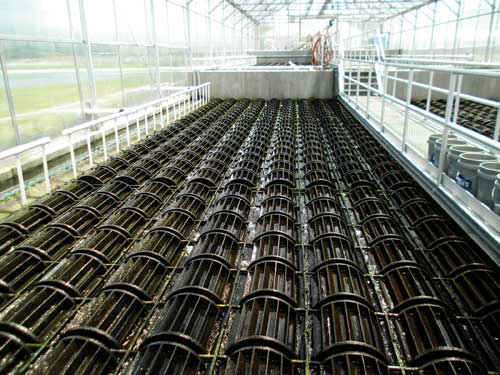Packaged Wastewater Treatment through Algae-Based Technology
Why it Works
Functionally, each wheel offers a suitable environment where bacteria and algae work in a symbiotic fashion to efficiently synthesize living organic mass from the nutrients in a variety of wastewaters. Algae and bacteria function well together because each organism provides a vital source of energy for the other. Bacteria convert the available organic matter into carbon dioxide (CO2), which is readily useable by algae. Algae create oxygen (O2), which the bacteria use during cellular growth. Bacterial conversion of wastewater nutrients is generally represented in the following equation.
(CH2O) O2 → CO2 H2O
It is important to note that the O2Â consumed in traditional bacterial treatment represents direct energy input since oxygen must be pumped into the treatment process by mechanical means. O2Â added through certain photosynthetic organisms such as algae is generally represented by the following equation where solar energy provides the energy needed to supply oxygen for bacterial conversion.
CO2 2H2O Solar Energy → (CH2O) O2 H2O
As the above equations suggest, there is a mutually beneficial relationship between bacteria and algae. By removal of organic carbon at the front of the process and introduction of CO2Â into the system, algal biomass production is maximized by limiting the competition from bacteria.
 |
Algae-based RAC Treatment System at Bio Town USA-Reynolds, IN Photo: Jackson Bishop |









